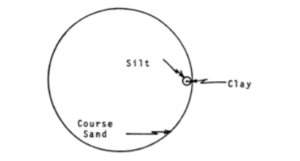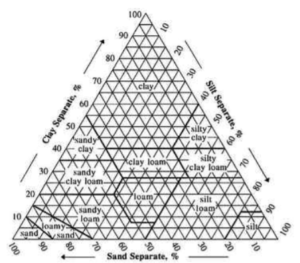by Eric Sideman, PhD
MOFGA’s Organic Crop Specialist Emeritus
Benefits of Composting
The soil is a complex and dynamic system of living and nonliving components. In natural ecosystems, minerals cycle from living back to non-living components, while organic matter levels remain relatively constant as deposits of organic matter (from falling leaves, for example) balance decomposition.
In contrast to natural ecosystems, agricultural systems remove plants or plant parts during harvest,so some minerals and organic matter are also removed from soils. Practices aimed at obtaining the greatest yields may stress soils even more. Growers should understand and appreciate the workings of the soil system in order to compensate for these losses.
Soil contains five major components: living organisms, dead organic matter, minerals, water and air. The living organisms, which include worms, insects and other arthropods, plants, algae and bacteria, are of major importance. When alive, their bodies hold nutrients in the soil. As they die, their bodies are added to the organic matter.
Organic matter occurs as two basic forms: detritus (decomposed debris) and humus (well decayed, black, relatively stable organic residue).Humus is not completely decayed.When completely decayed, organic matter has been converted back into its inorganic compounds,such as water, carbon dioxide and minerals.
The mineral portion of the soil is derived from mechanical and chemical breakdown of the parent rock and is present as soil particles of various sizes.Water and air occur in pores within and between these particles.
Physical Properties of Soil
A major factor determining the size of pores in a soil is the size of the primary mineral particles. The three basic mineral size classes are sand (0.2-2.0 mm), silt (0.002-0.2 mm) and clay (less than 0.002 mm).

Relative sizes of sand, silt and clay. From “Soil Mechanics Level 1,” USDA NRCS, ftp://ftp.wcc.nrcs.usda.gov/wntsc/H&H/training/ soilsOther/soil-USDA-textural-class.pdf

Soil texture triangle. From “Soil Texture Calculator,” USDA NRCS, https://soils.usda.gov/technical/aids/investigations/texture/
The term soil texture refers to the relative proportion of sand, silt and clay. A loam, for example, has specific proportions of sand, silt and clay. Most soils fall between categories and are named accordingly; e.g., a sandy loam is a loam with a high proportion of sand.
Texture affects the water- and air-holding capacity of a soil. Water retention is based on adhesion of water molecules to the surface of soil particles. Water is held more tightly in small pores than in large pores because more of the volume of water in small pores directly contacts the soil particles. As a result, finely textured soils (clayey or silty soils) tend to hold water well, while coarsely textured soils (sandy soils) tend to allow water to drain freely.
The ability of a soil to hold water indirectly affects both its air and nutrient-holding capacity. A soil made of only small particles has only small pores and tends to become waterlogged. That is, all its pores fill with water, leaving no room for air. In such a soil, plant roots suffocate, because few plant species can move oxygen from above- to below-ground parts. On the other hand, a soil made of only large particles has only large pores and holds plenty of air – but because water drains so freely through this soil, soluble nutrients are easily leached (washed out). A mixture of different pore sizes is best.
Soil laboratories can analyze the texture of a soil – or you can try to determine soil texture by feel. Sandy soils feel gritty and do not form a ball when moistened and squeezed in your hands. Clay soils are slippery and form a sticky, compact ball that will not crumble when pinched. Loam molds into a ball easily and breaks apart if pinched.
Once you know the texture of your soil and some of the problems associated with that texture, how do you change it? You don’t. Trying to change the texture of a soil requires moving too much earth. Instead, correct a soil texture problem by working with another soil property: soil structure.
Soil structure refers to the arrangement of primary particles into secondary aggregations. Each aggregation is a group of many hundreds of thousands of soil particles forming crumbs or clumps of various sizes and shapes. Sandy soils may have little or no aggregation, while loams and clays exhibit varying degrees due to natural processes. Several environmental factors promote aggregation, including freezing and thawing, wetting and drying, plant and animal activity, soil tillage and additions of organic matter.
Raw organic matter itself does not improve soil structure; its subsequent decomposition does. During the decomposition process chemicals are released that act as glues cementing tiny soil particles together into aggregates. Fungi may initially enmesh soil particles, holding them together. Electrochemical properties of humus organize and stabilize the soil aggregates. But aggregate stability seems to depend heavily on slime produced by microbial activity.
In a heavy clay soil, improved structure will loosen soils, leading to better aeration and drainage, increased plant root penetration and more rapid solute (nutrient) diffusion. In sandy soils, improved structure reduces wind and water erosion and increases nutrient and water-holding capacity.
Many agricultural practices degrade soil structure, and crop production subsequently declines. The most severe damage comes from working wet soils, which are easily compacted. Compaction destroys pores and breaks apart aggregates. Some compacted clay soils may be practically impervious to water. Even dry soil can be damaged by excess tilling, which can pulverize soil aggregates.
Sources of Organic Matter
Organic matter is the key to good soil structure. Organic matter acts as a sponge, holding moisture and at the same time allowing excess moisture to drain. As mentioned above, organic matter also helps aggregate soils.
Numerous practices maintain or build the organic matter content of a particular soil, but the most common are adding compost or manure and growing green manure crops. Both will increase the organic matter content of a soil – but only temporarily, because organic matter is continuously decomposed. Eventually organic matter becomes somewhat stable (resistant to decay) as humus, but even humus decomposes slowly. Thus, organic matter needs to be added to soils continually.
Livestock manure from sheep, dairy or horse farms can increase soil organic matter. Spread manure evenly and till or fork it into the soil in the fall or early spring. Never use fresh manure near living plants, because it will osmotically draw water out of a plant. This is commonly referred to as“burning.”
If manure is available during the growing season, composting it before adding it to the soil will usually kill weed seeds that are common in some manures.
If your soil will benefit from a quick boost of living organisms, however,then adding fresh manure (at least 90 or 120 days before harvesting crops, according to USDA organic certification rules) can do this quickly. In addition to adding organic matter, manures add valuable plant nutrients to soils. (See the MOFGA Fact Sheet #11,“Natural Sources of Plant Nutrients.”)
Compost is a mixture of decomposed vegetative matter containing a large proportion of humus. It is made simply by piling organic matter and turning the pile about 10 days after it is first made and again after a month. A good compost pile requires sufficient bulk (about 3 feet by 3 feet by 3 feet) to hold the heat generated by decomposers and enough nitrogen to feed the decomposers (bacteria and fungi). Also, keep the pile moist by watering (but not soaking) it if it dries out; and aerated, by turning it. Compost is an excellent source of organic matter because it avoids problems associated with adding fresh organic matter, e.g., the possibility that bacteria involved with decomposition may temporarily “tie up” (incorporate into their bodies) the nitrogen in soils, at the expense of plants, which also need nitrogen. [See details of making compost in the MOFGA bulletin on soil fertility, and MOFGA Fact Sheet #5,“Composting in the Backyard or on a Small Farm.”]
Green manure is added simply by cultivating a crop in the field or garden and turning it into the soil while it is still green. Alfalfa, red clover, oats and rye are examples of good green manures. Plow them in before they go to seed so that their seed does not become a severe weed problem itself. However, note that using green manures is not as effective at adding organic matter as is adding livestock manure or compost. The extra tilling operations needed to prepare the ground, plant the crop and till the crop in add oxygen to the soil that “burns up” nearly as much organic matter as is added. On the other hand, green manure crops add fresh organic matter that feeds the microbes, which compost does not.
Maintaining soil organic matter levels is at the heart of organic farming. Not only does organic matter improve structure, but it is the key to supporting the dynamic balance of the soil system by feeding bacterial and animal life as well as plants.
Revision of this fact sheet was supported by the Natural Resources Conservation Service,U.S.Department of Agriculture, under agreement number 69-1218-2-24
